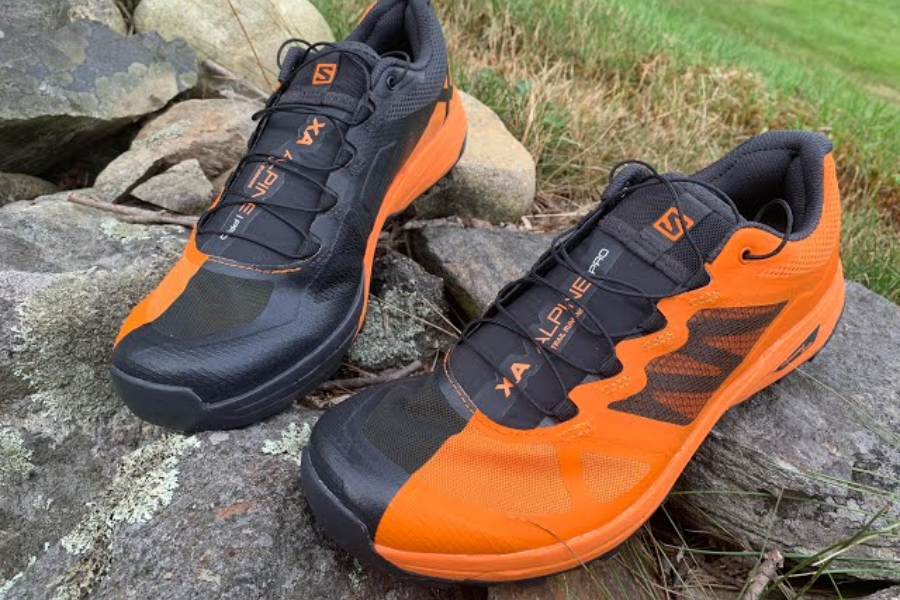Modified Technique Shoe: A Comprehensive Guide
Introduction to the Modified Technique Shoe
Two important aspects of footwear are comfort and performance. Introducing the unusual shoe design that blends elegance and functionality: the modified technique shoe. Whether you’re an athlete looking to reach peak performance or just someone looking for everyday comfort, these sneakers have gained notice for all the right reasons. They cater to all levels of walkers and runners by combining state-of-the-art technology with a focus on client needs.
You’ll learn more about this subject as we go further into it, including how customized technique shoes have changed throughout time, their special advantages, and what sets them apart in a crowded market. Let’s explore all you need to know about this important footwear selection!
The Evolution of the Modified Technique Shoe’s History
The history of the modified method shoe spans many decades. This footwear was first created with athletes in mind, with the goal of improving performance and offering the support they needed. This kind of shoe’s development is an inventive tale driven by user input and study.
Early Beginnings
When shoes were first invented, their main purposes were protection and utility. The technology included into these sneakers evolved along with sports science. Early iterations concentrated on fundamental stability and cushioning, but as biomechanics was studied, new developments started to appear. By the end of the 20th century, producers had begun to use lightweight materials and customized designs for several sports applications. This signaled a change in direction toward personalization based on unique foot forms and gait patterns.
The Rise of Customization
Over time, companies have consistently improved their products and services. The infusion of elite athletes’ data-driven views significantly transformed design concepts. The modern modified method shoe is a fusion of science and art, designed for daily wear comfort and style in addition to functionality. In addition to making it possible for shoes to fit particular foot types, this trend toward personalization has made it possible for everyone to find a pair that works for them.
Benefits of Using a Modified Technique Shoe
Shoes with modified techniques provide several benefits for people looking for support and comfort. Designed to accommodate specific foot conditions, these shoes can significantly improve mobility.
Enhanced Stability
Enhanced stability is a primary advantage. Because of the structure’s improved alignment, there is a lower chance of injury from uneven surfaces or bad posture. For athletes who need the finest possible assistance to compete at their highest level, this is especially crucial.
Pain Relief
An additional advantage is the reduction of pain. People who have long-term foot issues like bunions or plantar fasciitis may find that wearing shoes with modified arch support makes them feel less pain when they do everyday activities. For somebody with foot distress, the shoes’ fitting measure of padding and backing can have a significant effect.
Superior Cushioning
They frequently have excellent cushioning materials that efficiently absorb shock as well. Walking or running lessens the impact on joints as a result. Users may participate in their favorite activities without worrying about pain thanks to the mix of lightweight materials and cutting-edge cushioning technologies.
Aesthetic Appeal
Numerous designs are available in a range of colors and styles, enabling consumers to show their individuality while giving their feet first priority. Modified method shoes blend style and usefulness, making them a great option for many people trying to improve their general well-being.
How to Pick Your Ideal Pair of Shoes
The performance and comfort of your modified technique shoe selection can be greatly improved. When making your decision, keep the following important points in mind:
Assess Your Foot Type
Start by assessing your foot type. Do you have a high arch, flat feet, or a combination of both? Comprehending this is essential to locating the appropriate assistance. There are shoes designed specifically for different foot types, ensuring that you get the best possible fit.
Consider Your Activities
Next, think about the particular tasks you will be performing. Select a shoe that fits your schedule as different types of shoes are designed for different activities and exercises. There are shoes designed with modified techniques specifically for running, walking, and cross-training.
Pay Attention to Size
Size is also important. Make sure the heel fits snugly around your toes without sacrificing too much space. You may take into consideration any swelling that happens during the day by trying on shoes at the end of the day.
Evaluate Material Quality
Material quality is also important to consider; breathable materials will keep your feet dry throughout vigorous exercise. The right materials can also enhance comfort and durability. Read reviews from fellow users to gauge their experiences—this insight can guide you toward making an informed decision.
Advice on How to Wear and Care for Your Customized Technique Shoes
Taking good care of your customized technique shoe is essential to maximizing its performance. Here are some practical tips to ensure longevity and optimal performance:
Ensure a Snug Fit
Start by ensuring a snug fit without being too tight. This will help prevent blisters while providing optimal support. Shoes that are too loose can cause unnecessary friction, leading to discomfort and potential injuries.
Regularly Check Soles
Regularly check the soles for signs of wear. If they’re uneven or worn down, it might be time to replace them. Monitoring the tread while engaging in activities can also improve traction. A worn-out sole can compromise the shoe’s performance and your safety.
Cleaning Routine
Cleaning is necessary. Once you’ve used them, brush off any dirt with a moist cloth and let them air dry fully before storing. Stay out of the direct sun since it can cause materials to deform over time. Your shoes will last longer and remain in good condition if you maintain them clean.
Rotate Your Shoes
Try to turn your shoes around. Having many pairings increases the longevity of each by allowing it to rest in between usage. By doing this, you can keep your shoes from wearing out too soon and make sure you always have a trustworthy pair on hand.
Common Myths and Misconceptions about the Shoe
It’s a common misconception that only elite athletes wear customized technique shoes. These shoes actually fit a broad spectrum of people, from those who are just casual walkers to those undergoing rehabilitation. These popular misconceptions have been disproved:
Myth 1: Only for Athletes
Modified technique shoes are not just for elite athletes, despite what the general public believes. They are appropriate for anybody looking for comfort and support because they are made to assist a range of foot kinds and problems.
Myth 2: Style vs. Functionality
Another misconception is that practicality is sacrificed for appearance. Contemporary designs now combine performance and style to give users optimal support and a stylish appearance. Many companies have embraced fashionable designs that are functionally sound but yet appeal to consumers who are fashion minded.
Myth 3: Comfort Sacrifice
Some think wearing them means sacrificing comfort. The truth is quite the opposite—modified technique shoes are engineered specifically to enhance comfort and reduce strain during activities. The combination of thoughtful design and high-quality materials ensures that users experience both comfort and performance.
Myth 4: One Size Fits All
Many people think that all shoes made with changed techniques are made equally. Various brands and models include characteristics that are specific to the demands of the user, such as activity level or foot type. When selecting the perfect pair, knowing your needs might make all the difference.
Shoe Modifications: Customizing Your Footwear for Comfort
In addition to the benefits of modified technique shoes, many individuals may also benefit from shoe modifications to enhance their fit and comfort further. Let’s explore why shoe modifications might be necessary.
Why Would I Need Shoe Modifications?
Ever find a shoe that was almost perfect, except for a small issue? Changes to the shoe’s fit can assist to lessen discomfort and increase comfort. There are small and easy modifications to improve shoe fit with minor issues, as well as more serious modifications for specific pain and conditions.
Resoling Shoes
One common modification is resoling shoes. This process involves replacing the worn-out sole of a shoe, allowing you to extend its lifespan. Resoling can be particularly beneficial for high-quality footwear, ensuring you get the most out of your investment.
Addressing Leg Length Differences
If one leg is shorter than the other, a lift on one side levels out the legs. This difference may have developed from an injury, especially as a child, or from hip or knee surgery. When the difference is small enough, a lift is placed inside of the shoe under an insert. The heel begins to slip out of the back of the shoe when the lift is too thick. If this occurs, the lift needs to be placed on the outside of the shoe.
Accommodating Wide Feet and Bunions
Finding a proper fitting shoe is crucial for those with wide feet or bunions. Orthopaedic shoes often have multiple widths available, accommodating various foot shapes. In cases where additional space is needed, shoe stretchers can help create extra room.
If the foot requires more space, modifications like a balloon patch or a sole split can provide additional width. The balloon patch acts as a bunion pocket, while a sole split can widen the sole, creating a more comfortable fit.
Addressing Bony Prominences
Walking and standing might be uncomfortable if the bottom of the foot has a bony protrusion. To make room for this bony protrusion, a modification known as an excavation involves removing a portion of the shoe. Although custom foot orthotics can help reduce discomfort, excavation can also be used in conjunction with orthotics when additional room is needed.
Solutions for Forefoot Pain
Utilizing a rocker sole, which slopes forward in the shoe to relieve pressure on the ball of the foot, can help lessen forefoot pain. To further relieve pressure on sore spots, a metatarsal bar can be inserted beneath the ball of the foot.
Modifications for a Fused Ankle
A rocker sole might be quite helpful for people who have a fused ankle. By minimizing the need for the ankle to flex at key places throughout a stride, this design helps ease pain. Solid ankle cushioned heels, or SACH heels, might also be helpful since they lessen shock when the foot first touches the ground.
Conclusion
In amazing ways, the modified method shoe is influencing the direction of footwear in the future. Expect even more inventive designs that meet a wider range of demands as materials and technology continue to progress. This footwear is a movement towards emphasizing comfort, support, and style rather than just a fad.
Modified method shoes are more significant than ever because to the growing awareness of foot health and the need of wearing appropriate footwear. For many people, adopting this footwear revolution means having better mobility and overall health. Modified method shoes are prepared to assist you on your path to comfort and performance, whether you’re an athlete, an occasional walker, or someone managing everyday life with foot difficulties.
Additional Resources
To further your understanding of modified technique shoes and explore additional options, consider visiting these resources:
- Footwear Technology Innovations – Learn about the latest advancements in shoe technology and materials.
- Athletic Performance Research – Explore studies focused on footwear and its impact on athletic performance.
- Foot Health Tips – Discover tips for maintaining foot health and choosing the right footwear for your needs.




